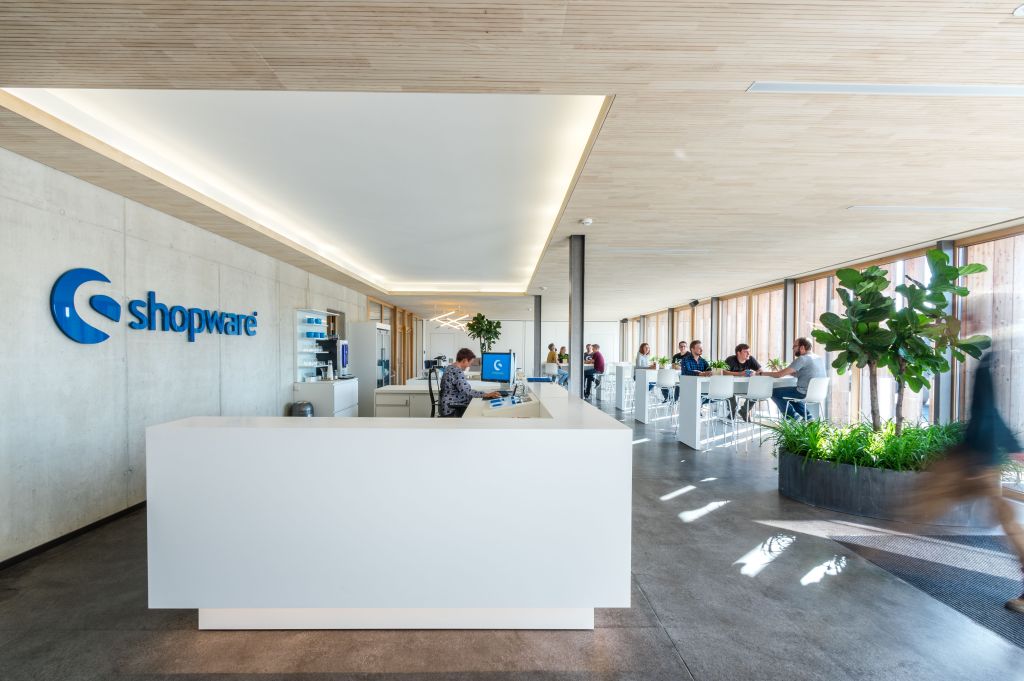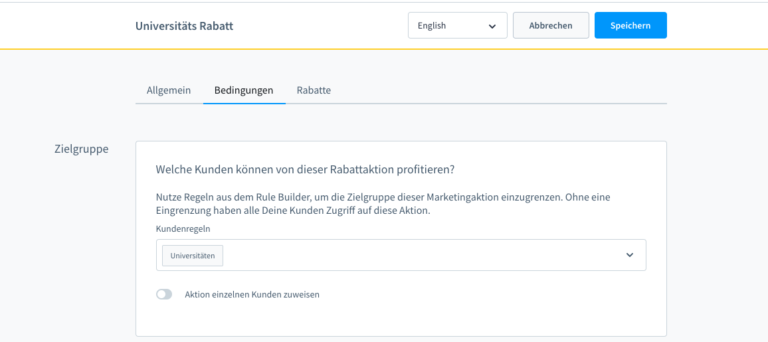Shopware 6 presents itself!
Shopware has become the darling of the e-commerce scene in the last year and has grown strongly. Shopware 6 has now been released. In this post, we show what Shopware 6 has to...

Shopware has become the favorite of the e-commerce scene over the past year and has experienced significant growth.
Shopware has become a favorite in the e-commerce scene over the past year and has experienced significant growth. Now, Shopware 6 has been released. In this post, we will show what Shopware 6 has to offer and why we are choosing this platform.
Rapid Growth
Statistics may barely keep up with Shopware’s growth, as version 6 is still very new. It’s certain that its adoption is currently growing rapidly, as seen on the screen with data from builtwith.com.

Growth of Shopware according to the platform builtwith.com
Before we talk about the benefits of Shopware for shop operators, here are some technical details.
What is the technical foundation behind Shopware 6?
Shopware 6 is based on a state-of-the-art technology stack. The backend is developed using the PHP framework Symfony, while the frontend is built with Vue.js, Bootstrap, and Twig. This setup makes Shopware 6 well-suited for modern “headless” and “API-first” architectures, enabling it to integrate seamlessly within a diverse system landscape.
As an agency, this stack aligns perfectly with our expertise. We develop custom projects with app-like features using Symfony, and we have implemented Vue.js in various projects with a headless architecture. Additionally, Bootstrap and Twig have been longstanding tools in our work with WordPress and Drupal.
Why do we see a great future for Shopware 6?
Shopware 6 appeals to us because it aligns with our technical stack and our understanding of what makes good software:
- Shopware 6 is Open Source.
- Modern architecture: Thanks to its headless architecture, Shopware 6 can be integrated into complex system environments and easily connected with other systems using an “API First” approach, facilitating integration with ERP systems (Navision, Sage, SAP, etc.), PIM, DAM, and CRM.
- Frontend as a Progressive Web App (PWA): Mobile usage continues to rise, and Shopware 6 supports Progressive Web App technology through Vue Storefront, the leading open-source PWA app for Shopware.
- Shopware offers a broad ecosystem and versatile deployment options. It shares the same technology stack as other major e-commerce tools like PIM Akeneo, ensuring seamless integration.
What features does Shopware 6 offer to me as an online shop operator?
Shopware offers many powerful features out-of-the-box. The most important ones are described below.
Clean and Intuitive Backend
The backend is intuitive and clean, providing very flexible configuration options with the Rule Builder, which can be set up with little to no configuration effort. Examples include “Premium customers do not pay delivery fees” or “Customers who purchase the product through the ‘Pop-Up Store’ sales channel get a 10% discount.”

Screenshot: A rule is defined where all customers in the ‘University’ group receive a 20% discount.
Experience Worlds for Blending Content and Commerce
With the experience worlds, Shopware combines content and commerce. Thanks to a modular structure, content and commerce elements can be connected. This is suitable, for example, for landing pages on a specific topic. For instance, in a beauty shop, various products in the ‘skincare products for winter’ range can be featured on a single page. How easy it is to create such pages is demonstrated in the video.
B2B Features
Shopware 6 includes a comprehensive B2B framework with powerful features. Some of the key features are:
- Customers can be targeted specifically, and prices can be individually set for each customer.
- Precise control of rights, roles, and approval processes in the backend.
- Contact and address management in the backend.
An ERP solution is included
Pickware is an ERP solution that offers a wide range of features:
- Warehousing such as the management of multiple warehouses and support for static (fixed bin system) & dynamic warehousing (chaotic storage).
- Functions for supplier management such as purchasing in foreign currencies or automatic ordering processes
- Returns overview and cancelations
- Automatic invoicing and dispatch
- Omnichannel functionalities for the POS: payment modules for retail stores.
A Large Ecosystem for Plugins and Modules
Shop operators can benefit from a large ecosystem and many existing plugins. The extensions and plugins can be downloaded from the store and do not always have to be developed in-house. The plugin store can be found here.
And now, before the video of the Community Day when Shopware 6 was launched, here is a brief outline of the history of Shopware.
History and Milestones
The first version of Shopware was released in 2004. The most successful version of Shopware to date – version 5 – was released in April 2015. Some key figures: By December 2019, Shopware 5 had been downloaded more than 800,000 times. In total, all Shopware stores generated a total of 5.8 billion euros in sales via Shopware stores in 2018. And on January 15, 2020, Shopware 6 was released. The company is based in Schöppingen, Germany, and is 100% equity-financed.
And the whole thing in the words of the CEO
And here is the launch of Shopware 6 in the words of Sebastian Hamman, CEO and Co-Founder of Shopware. The video was recorded at Community Day 2019, where Shopware 6 was presented for the first time.